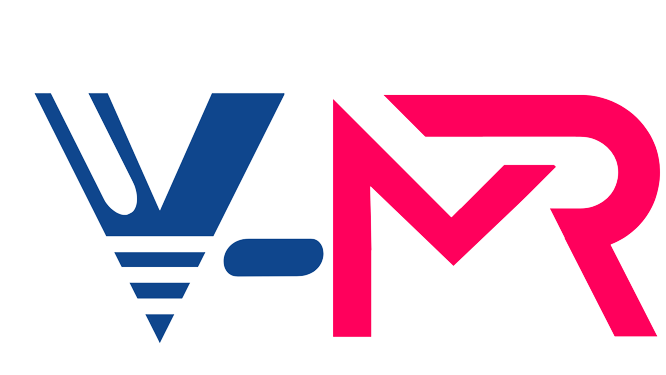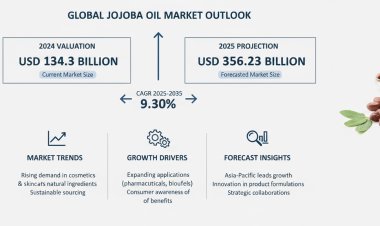Predictive Maintenance Market Size to Reach $19.3 Billion at a CAGR of 30% by 2028
Predictive Maintenance Market is projected to reach a value of USD 19.3 Billion by 2028 at a CAGR of 30% over the forecast period.

The Global Predictive Maintenance Market was valued at USD 4 Billion in 2021. Predictive maintenance industry is projected to reach a value of USD 19.3 Billion by 2028 at a CAGR of 30% over the forecast period.
The predictive maintenance market is a rapidly growing industry that is expected to continue to expand in the coming years. Predictive maintenance involves using data analytics and machine learning algorithms to identify potential equipment failures before they occur, allowing for maintenance to be scheduled in advance and preventing costly downtime.
Click To Get a Free Sample On the Research Study @ https://www.vantagemarketresearch.com/predictive-maintenance-market-2014/request-sample
North America is expected to hold the largest market share in the predictive maintenance market, followed by Europe and Asia Pacific. The growing adoption of predictive maintenance solutions by manufacturing industries, the presence of major players in the region, and the increasing government initiatives are driving market growth in North America.
Top Companies in the Predictive Maintenance Market
- Microsoft(US)
- Google (US)
- IBM(US)
- Oracle (US)
- SAP(Germany)
- Splunk (US)
- OPEX Group (UK)
- AWS (US)
- SAS Institute (US)
- GE (US)
- Schneider Electric (France)
- Software AG (Germany)
- TIBCO Software (US)
Predictive Maintenance Market Dynamics:
Predictive Maintenance Market software is used to monitor the functionality and state of any piece of machinery or equipment while it is in use. Utilizing cutting-edge techniques for equipment observation, the program enables maintenance to be planned for failure. Software for Predictive Maintenance Market has applications in many industries, including detecting harmonic distortion-induced three-phase power imbalances, motor amperage spikes, overheating from worn bearings, preventing insulation breakdowns, and identifying potential overloads or degradation in electrical panels.
Predictive Maintenance Market is anticipated to increase as more businesses adopt this technology in the upcoming years. The growing need for big data and the Internet of Things are key development drivers for the Predictive Maintenance Market sector. Additionally, organizations are becoming more concerned with lowering the expenses of managing and upkeep their assets. By identifying failure patterns and minor irregularities in the processes, adopting technologies like Predictive Maintenance Market aids organizations in preventing downtime and lowering operations and maintenance expenses. This is accomplished by precisely forecasting asset breakdowns to ensure a productive supply chain. To provide an effective system for Predictive Maintenance Market solutions and meet the needs of varied organizations, businesses are now integrating sensor technology into maintenance activities. The study of remote and electronic maintenance involves assisting and supporting maintenance operations in remote and hazardous areas. To increase the effectiveness and affordability of the Predictive Maintenance Market, businesses are developing technology-based ERP software solutions.
Furthermore, most international suppliers are planning Predictive Maintenance Market programs, driving the need for a highly educated workforce. Companies must develop competence in fields including networking, apps, and cybersecurity. Additionally, they aim to use IoT data to provide advanced analytics expertise, which includes AI and ML. This will enable them to anticipate outcomes, prevent errors, optimize operations, develop original products, and provide these services. To deploy AI-based IoT technologies and skill sets, trained personnel must operate the most recent software systems. Therefore, it is necessary to train current employees to use updated and upgraded technologies.
Additionally, industries are quickly embracing new technologies but need help finding personnel with the necessary skills. Additionally, when businesses integrate AI into the IoT, there will be a rising need for data analyst teams focused on operational intelligence. This is to manage the enormous amounts of data produced by IoT devices.
Moreover, the high costs associated with R&D capabilities, limited infrastructure, and lesser sensitivity of certain liquid biopsies are projected to stymie market expansion. In addition, a lack of favorable reimbursement scenarios and technology penetration in developing economies, the need for large capital investments to set up production facilities, the low sensitivity and specificity limitations of Predictive Maintenance Market, and a lack of suitable infrastructure in low- and middle-income countries are expected to hamper the market growth during the forecast period.
Overview of Predictive Maintenance
Predictive maintenance is a technique that uses data analytics and machine learning algorithms to predict equipment failure before it occurs. This approach uses sensor data and other real-time data from the equipment to identify patterns and anomalies that indicate potential issues.
By identifying potential issues before they occur, predictive maintenance can help companies avoid costly downtime and minimize the need for reactive maintenance. It can also help organizations optimize their maintenance schedules and reduce maintenance costs by identifying the optimal time for maintenance activities.
Predictive maintenance relies on advanced analytics and machine learning algorithms to detect patterns in the data and predict potential failures. This can involve using complex algorithms and models to analyze data from multiple sources, including sensors, operational data, and historical data.
Implementing predictive maintenance can offer several benefits, including reduced downtime, increased equipment reliability, improved safety, and reduced maintenance costs. Predictive maintenance can also help organizations better understand their equipment and identify opportunities for process optimization.
Predictive maintenance is a critical technique for companies looking to optimize their operations and improve their bottom line. With the help of advanced analytics and machine learning, organizations can improve their maintenance strategies and avoid costly downtime while maximizing the efficiency and effectiveness of their equipment.
Buy Now Our Exclusive Predictive Maintenance Industry Report @ https://www.vantagemarketresearch.com/buy-now/predictive-maintenance-market-2014/0
Predictive Maintenance Market Challenges
Data Quality: The success of predictive maintenance relies on the quality of data collected from sensors and other sources. Poor quality data can lead to incorrect predictions and unreliable results.
Data Integration: Predictive maintenance requires the integration of data from multiple sources, including sensors, maintenance records, and operational data. This integration can be challenging, especially when data is stored in different formats and locations.
Skill Gap: To implement predictive maintenance, organizations need skilled data analysts and machine learning experts who can analyze data and build predictive models. However, there is currently a shortage of skilled professionals in this field, making it difficult for some organizations to implement this technology.
Cost: Predictive maintenance requires significant upfront investment in sensors, data analytics tools, and other technologies. This can be a barrier to entry for some organizations, especially smaller ones with limited resources.
Regulatory Compliance: Certain industries like healthcare and aerospace have strict regulations and compliance requirements. Implementing predictive maintenance in these industries may require additional measures to ensure compliance.
Key Developments:
- In May 2021, the introduction of Lumada Inspection Insights was announced by Hitachi Ltd. Lumada Inspection Insights, developed by Hitachi Energy and Hitachi Vantara, enables businesses to automate asset inspection and advance sustainability objectives. The proposed approach employs AI and machine learning to evaluate resources, hazards, and various image types to address multiple reasons for failure.
- In July 2021, the industry's first dual safety and cybersecurity-certified bypass and alarm management software application, EcoStruxureTM TriconexTM Safety View, was introduced by Schneider Electric. The system allows operators to see both the bypass status and the level of risk reduction. It also provides the critical alarms necessary to operate the plant safely when risks are high.
Predictive Maintenance Market Regional Analysis
In 2021, North America had the highest revenue share at 42.6%. During the forecasting period, North America is anticipated to grow the market. Due to the increasing adoption of Predictive Maintenance Market solutions that use cutting-edge technologies like IoT, cloud computing, machine learning, and artificial intelligence, North America will dominate the worldwide Predictive Maintenance Market during the forecast period (AI). Businesses in the region are embracing Predictive Maintenance Market solutions to identify operational performance aspects and enhance maintenance practices and reliability. Due to major competitors operating in the Predictive Maintenance Market, the US currently holds the biggest market share in North America.
Read Our Latest Press Release: Nutraceuticals Market - In-depth Analysis
Contact us
Eric Kunz
6218 Georgia Avenue NW Ste 1 - 564
Washington DC 20011-5125
United States Tel: +1 202 380 9727
Email: [email protected]
Website: Vantage Market Research


















